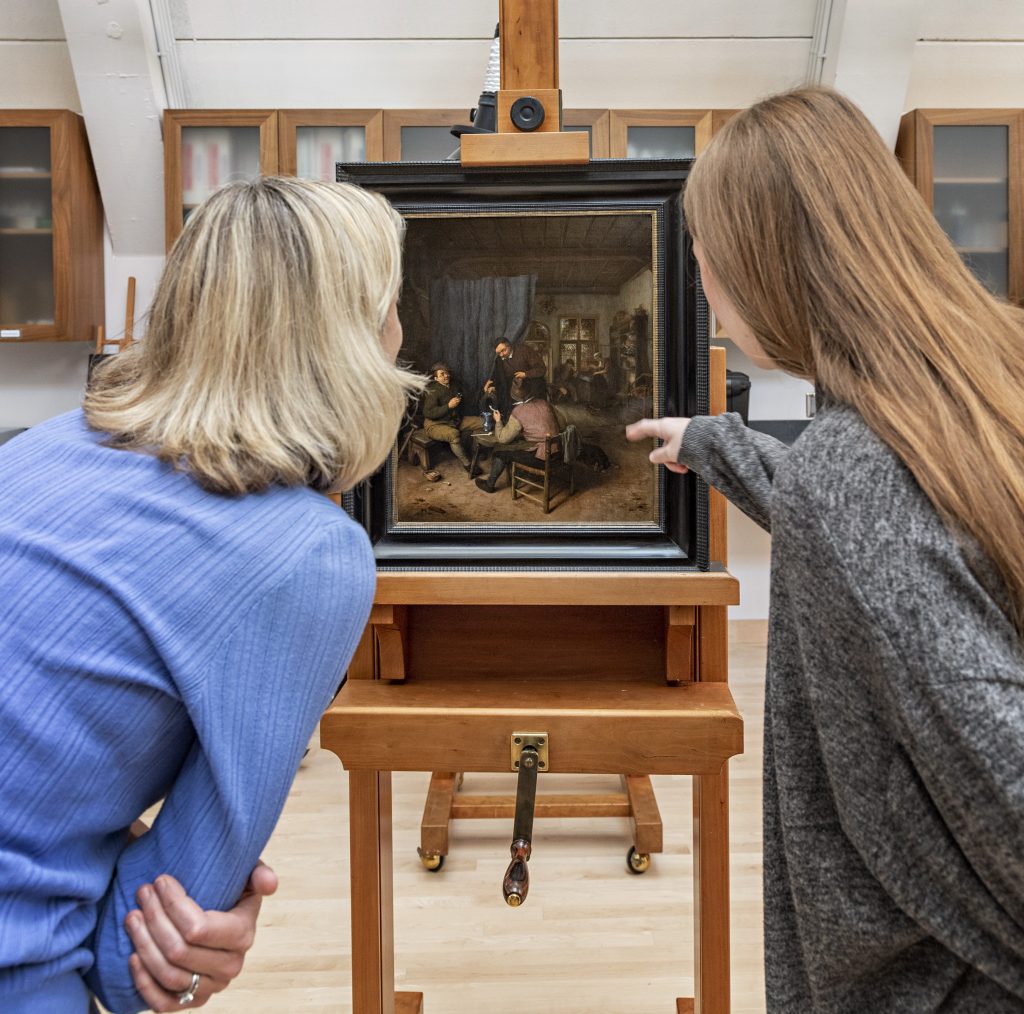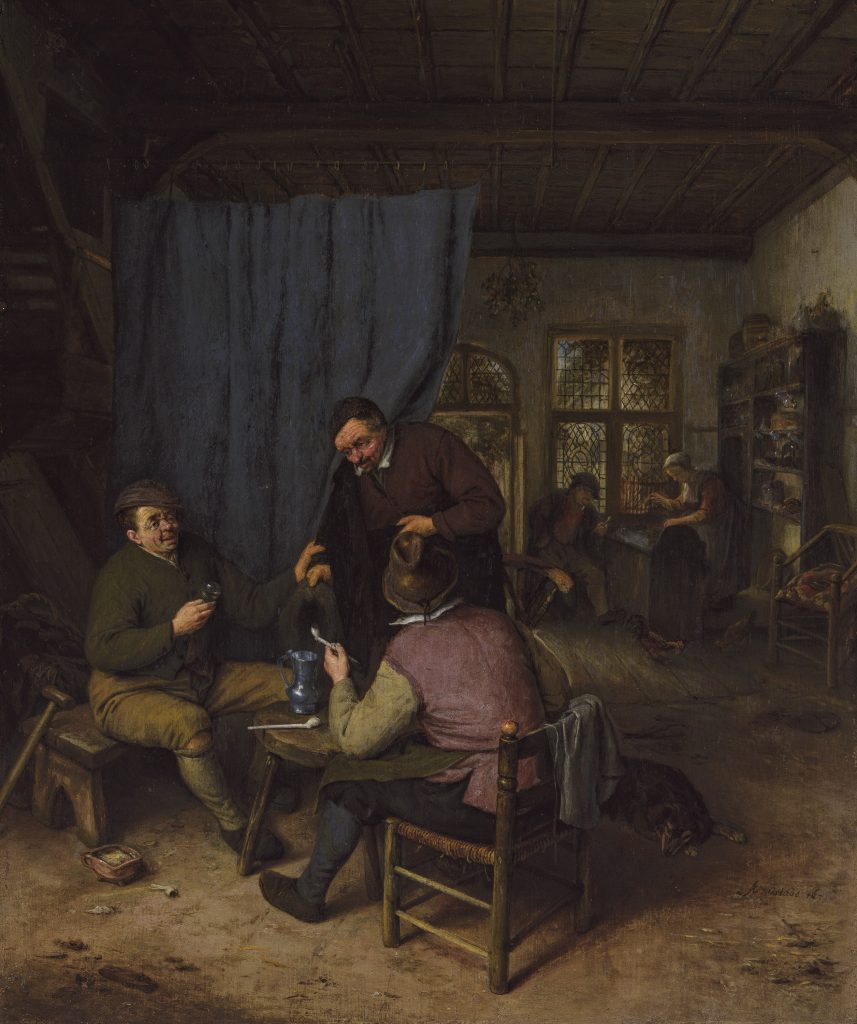Museums & Institutions
This Adriaen van Ostade Painting, Once Coveted by Hitler, Has Found a New Home at MFA Boston
The 17th-century work was once destined for the Führermuseum.

The 17th-century work was once destined for the Führermuseum.

Sarah Cascone

A Nazi-looted Adriaen van Ostade painting once destined for Adolf Hitler’s Führermuseum will now make its home at the Museum of Fine Arts, Boston, thanks to an agreement between collectors Susan and Matthew Weatherbie and the heirs of art dealers Paul Graupe and Arthur Goldschmidt.
The work of the 17th-century Dutch artist, Customers Conversing in a Tavern (1671) was part of the inventory of Paul Graupe’s Paris gallery in 1939, when he was forced to flee the country due to the persecution of Jews under Nazi occupation.
Graupe asked his business partner, Arthur Goldschmidt, to try and smuggle the gallery’s stock out of the country. But in 1941, Goldschmidt sold the oil-on-panel painting to Karl Haberstock, an art dealer working with the Nazis, before himself emigrating to the U.S. by way of Cuba.
Haberstock, in turn, sold the work to Hitler’s art adviser and curator, Hans Posse, who hoped to include the piece in the planed Führermuseum in Linz, Austria, but the Allied forces recovered it at the Austrian Altaussee salt mine near the end of the war. When no one came forward to claim it, the French state auctioned it in 1951, and the painting changed hands several times in the subsequent years.

Adriaen van Ostade, Customers Conversing in a Tavern (1671). Collection of the Museum of Fine Arts, Boston, promised gift of Susan and Matthew Weatherbie, in support of the Center for Netherlandish Art. Courtesy of the Museum of Fine Arts, Boston.
When the Weatherbies purchased Customers Conversing in 1992, they were unaware of its ties to the Nazis. The interior scene depicts two groups of people chatting, sharing the space with a rooster and a sleeping dog.
Now, following six years of provenance research and negotiations, the Weatherbies have agreed to an undisclosed cash payment to the Goldschmidt and Graupe heirs, in exchange for being able to keep the work. In 2017, the couple had pledged to donate Customers Conversing to the MFA as part of a larger collection of roughly 30 Dutch and Flemish paintings.
“We are happy that these longstanding ownership issues have been resolved so amicably, and we are delighted to display Customers Conversing in a Tavern at the MFA so that it can be shared with the public,” the Weatherbies said in a statement.
Victoria Reed, the museum’s senior curator for provenance, first became suspicious of the painting’s provenance not long after the couple promised it to the museum, when she spotted it in the German Lost Art Foundation database.
Further research turned up correspondence between Goldschmidt and Graupe proving that the fate of the painting had been the source of controversy between the two men.
At one point, Graupe reported Goldschmidt to the French government for “wrongfully holding property”—which didn’t sit well with the accused.

Victoria Reed, senior curator for provenance, with Adriaen van Ostade’s Customers Conversing in a Tavern (1671). Collection of the Museum of Fine Arts, Boston, promised gift of Susan and Matthew Weatherbie, in support of the Center for Netherlandish Art. Photo courtesy of the Museum of Fine Arts, Boston.
“What is the matter with you?” Goldschmidt wrote Graupe in March 1941. “How can you who spent the entire war in neutral countries, safe and unharmed… dare to mobilize the authorities against me.” He would later claim he’d been forced to sell the Van Ostade and other paintings to appease smugglers, and it appears Graupe never learned the truth that the work went to the Nazis.
“It’s not a black-and-white story,” Reed told Boston magazine. “It’s hard to neatly categorize the decisions of a Jewish emigre art dealer, who is living in the south of France, trying to survive and make his way out of Europe.”
After the war, Graupe fought to reclaim his property, but at some point mysteriously removed the Van Ostade painting from his claims. Graupe died in Germany in 1953, and Goldschmidt in Switzerland in 1960.
Customers Conversing went on view at the museum over the weekend alongside other Van Ostade works, as well as paintings by his student Cornelis Bega.
More Trending Stories:
Is Time Travel Real? Here Are 6 Tantalizing Pieces of Evidence From Art History